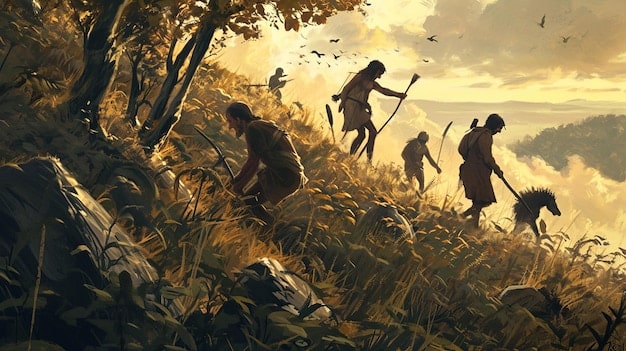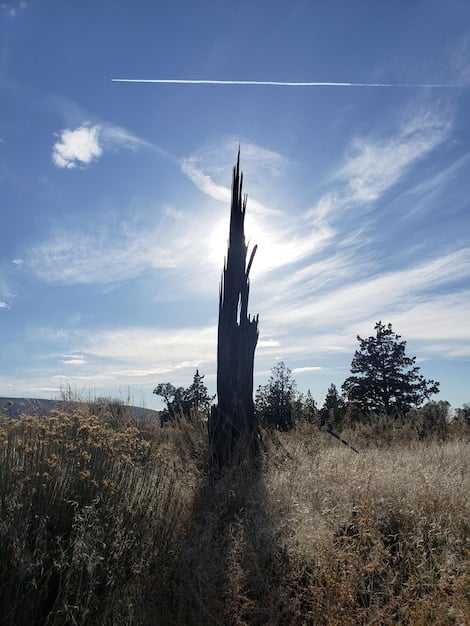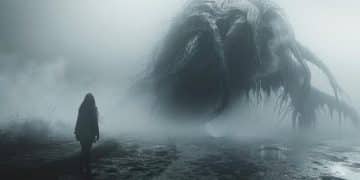The First Witchers: Exploring Their Experimental Origins & Mutations

The First Witchers underwent rigorous experimental mutations and trials, transforming ordinary humans into monster slayers through alchemical processes and selective breeding, resulting in enhanced abilities and resilience.
Embark on a journey to uncover the origins of the witchers, exploring the brutal experimental mutations and early trials that shaped these legendary monster hunters. Learn about the alchemical processes and selective breeding that gave rise to their extraordinary abilities and resilience.
The Genesis of Witcher Mutations
The genesis of the witchers began with a desperate need for monster slayers, leading to the development of experimental mutations. These mutations aimed to transform ordinary humans into beings capable of withstanding and combating the increasingly prevalent monsters.
The initial approach involved alchemical processes and selective breeding, focusing on traits that would enhance combat prowess and resilience. These early experiments were shrouded in secrecy, conducted in hidden fortresses and laboratories across the Continent.
Early Alchemical Experiments
The alchemists responsible for these transformations employed a variety of ingredients and techniques, many of which were poorly understood. This resulted in unpredictable outcomes, often leading to the death or severe deformation of the subjects.
The Role of Selective Breeding
Selective breeding played a crucial role in the early stages. By carefully choosing individuals with desirable traits, such as strength, agility, and resistance to disease, the alchemists aimed to create a pool of candidates more likely to survive the mutations.

The genesis of the witcher mutations required extensive experimentation, combining alchemy and selective breeding to produce potential monster slayers. This marked the beginning of the witcher order and its role in combating monstrous threats.
The Trial of the Grasses: A Brutal Transformation
The Trial of the Grasses was the most significant and perilous step in becoming a witcher. It was a series of alchemical processes designed to imbue candidates with superhuman abilities, but at a tremendous cost.
This trial involved the administration of potent mutagens that triggered profound physical and physiological changes. Those who survived emerged as witchers, but many succumbed to the process, highlighting its brutal nature.
The Mutagens Used
The exact composition of the mutagens used in the Trial of the Grasses remains a closely guarded secret. It is believed that they contained a blend of rare herbs, monster extracts, and alchemical compounds designed to alter the candidate’s genetic makeup.
The Physiological Changes
The trial induced numerous physiological changes, including enhanced muscle mass, heightened senses, increased metabolism, and resistance to toxins and diseases. These alterations transformed ordinary humans into formidable monster slayers.
- Increased muscle mass and bone density
- Heightened senses, particularly vision and hearing
- Enhanced metabolism and accelerated healing
- Resistance to toxins and diseases
The Trial of the Grasses proved to be a defining moment in the transformation of aspiring candidates, bestowing upon them enhancements that ensured their proficiency as monster slayers but at a steep price.
Early Witcher Schools and Their Philosophies
As witchers began to emerge, distinct schools formed, each with its own unique philosophy, training methods, and code of conduct. These early schools played a pivotal role in shaping the identity and reputation of witchers.
Notable schools included the Wolf, Cat, and Griffin, each emphasizing different combat styles and approaches to monster hunting. These schools established the witcher profession as a structured and organized entity.
The School of the Wolf
The School of the Wolf, based at Kaer Morhen, was renowned for its emphasis on combat proficiency, discipline, and adherence to the witcher code. Its members were regarded as skilled swordsmen and monster hunters.
The School of the Cat
The School of the Cat distinguished itself through its emphasis on agility, stealth, and unconventional tactics. Its members were often viewed with suspicion due to their willingness to accept morally ambiguous contracts.

The establishment of different schools significantly influenced the development of witcher culture, providing distinct philosophies, training methods, and codes of conduct that would shape the identity of the individuals involved.
Ethical Dilemmas and Moral Ambiguity
The witchers’ existence was often fraught with ethical dilemmas and moral ambiguity. Their role as monster slayers placed them in situations where they had to make difficult choices, often with no clear right or wrong answer.
The witcher code, while providing a framework for their actions, did not always offer clear guidance in complex situations. This led to debates and conflicts among witchers, further complicating their already challenging lives.
The Lesser Evil
One of the most common dilemmas faced by witchers was the concept of the “lesser evil.” This involved choosing between two undesirable outcomes, with the hope of minimizing harm to innocent parties.
Monster or Human?
Another ethical challenge arose when witchers encountered intelligent monsters or humans who behaved monstrously. Determining whether to kill or spare such beings often required careful consideration and a willingness to question traditional beliefs.
- The “lesser evil” dilemma
- Decisions regarding intelligent monsters
- Conflicts between duty and conscience
- The price of neutrality
The exploration of ethical dilemmas formed a core aspect of the witcher narrative, challenging the simplistic view of the witchers as unambiguous heroes acting according to a predefined code.
The Decline of the Witchers
Despite their extraordinary abilities and contributions to society, the witchers faced a gradual decline. Factors such as dwindling monster populations, increasing prejudice, and political machinations contributed to their eventual demise.
As monsters became less prevalent, the demand for witchers diminished, leading to financial hardship and a loss of relevance. Prejudice against witchers, fueled by fear and misunderstanding, further marginalized them.
The Role of Prejudice
Prejudice played a significant role in the decline of the witchers. Many people feared and distrusted them due to their mutations and perceived lack of humanity. This led to discrimination and hostility, making it difficult for witchers to find acceptance and support.
Political Intrigues
Political intrigues also contributed to the witchers’ downfall. Powerful factions sought to undermine their influence and eliminate them as potential rivals. This involved spreading propaganda, inciting violence, and manipulating events to discredit the witchers.
The decline of monsters in the world, public prejudice, and negative propaganda proved to be key elements contributing to the witchers’ decreasing relevance in society at large.
Legacy and Influence on Modern Monster Hunting
Despite their decline, the witchers left a lasting legacy and influenced modern monster hunting techniques and practices. Their knowledge of monsters, combat skills, and alchemical expertise continue to inspire and inform those who seek to protect humanity from supernatural threats.
Many of the witchers’ methods and innovations have been adapted and refined by monster hunters around the world. Their stories and legends continue to captivate and inspire, ensuring that their memory lives on.
The Witcher’s Bestiary
The witchers’ bestiary, a detailed compendium of monster descriptions, weaknesses, and combat strategies, remains an invaluable resource for monster hunters. It provides crucial information for identifying and defeating various creatures.
Combat Techniques
The witchers’ combat techniques, characterized by a blend of swordsmanship, alchemy, and magical signs, have been studied and emulated by monster hunters across the Continent. Their emphasis on adaptability and situational awareness is particularly valued.
The legacy of these capable monster hunters persists, extending its influence into modern monster hunting through the preservation of combat techniques, bestiaries, and other useful resources.
| Key Element | Brief Description |
|---|---|
| 🧪 Trial of Grasses | Deadly alchemical process that grants witchers superhuman abilities. |
| ⚔️ Witcher Schools | Distinct academies with unique training and philosophies. |
| 🤔 Ethical Dilemmas | Witchers often face challenging moral choices. |
| 📜 Witcher Legacy | Their knowledge influences modern monster hunting. |
Frequently Asked Questions (FAQ)
▼
The Trial of the Grasses was a brutal alchemical process that transformed ordinary humans into witchers. It involved the administration of potent mutagens, which altered the candidate’s physiology, granting superhuman abilities but often resulting in death.
▼
Early witcher schools included the Wolf, Cat, and Griffin. Each school had its own unique philosophy, training methods, and code of conduct, shaping the identity and reputation of its members and contributing to the broader witcher culture.
▼
Witchers often faced dilemmas, such as the “lesser evil,” where they had to choose between two undesirable outcomes. They also grappled with questions of whether to kill intelligent monsters or humans who behaved monstrously, testing the limits of their code.
▼
Witchers declined due to dwindling monster populations, increasing prejudice, and political machinations. As monsters became less prevalent, the demand for witchers diminished, leading to financial hardship and societal marginalization.
▼
Witchers left a lasting legacy through their knowledge of monsters, combat skills, and alchemical expertise. Their methods and innovations have been adapted and refined by monster hunters, ensuring the survival of their stories and legends.
Conclusion
In conclusion, the journey of the first witchers was a complex and transformative one, marked by alchemical experimentation, brutal trials, and ethical dilemmas. Despite their eventual decline, their legacy continues to influence modern monster hunting and captivate audiences with tales of courage, resilience, and moral complexity.





